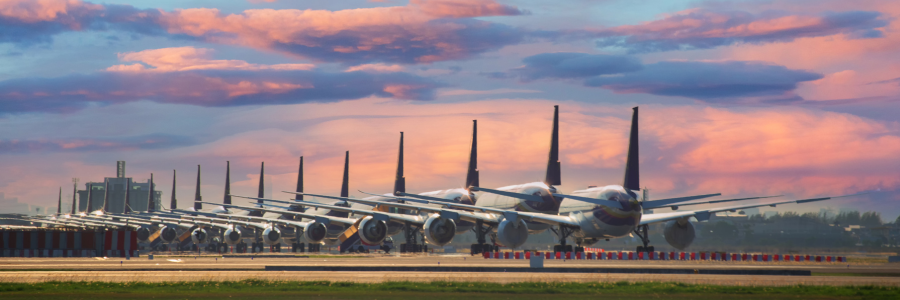With less than two months to go before being sworn into office again as the 47th President of the United States, President-elect Donald Trump is essentially picking up from where he left off during his term as the 45th President, in terms of his plans to implement tariffs. Which was a cornerstone of his pledges on the campaign trail, prior to being re-elected earlier this month.
In posts made on his Truth Social platform yesterday Trump said that, effective January 20, when he takes office, that he will sign an Executive Order, calling for a 25% tariff on all U.S.-bound imports from China and Mexico, as well as an additional 10% tariff on all U.S.-bound imports from China—with the latter announced in a separate Truth Social post
“Both Mexico and Canada have the absolute right and power to easily solve this long simmering problem,” Trump said on Truth Social. “It is time for them to pay a very big price!”
As previously reported by LM, the topic that received the most attention in the run-up to the election focused on tariffs, in terms of what may be coming, with Trump saying repeatedly on the campaign trail that he plans to increase the percentage of tariffs levied on companies importing into the United States, from where they have remained since they were implemented in 2018, during his first term in office. To that end, he has said he was committed to imposing a 10%-to-20% tariff on all imports regardless of what country they come from, and 60% or higher on goods entering the U.S. from China.
When the Trump administration first rolled out its plan in mid-2018, it was comprised of a 25% tariff on $50 billion worth of goods imported from China, under the purview of an “America First” policy geared towards a more fair and beneficial position for U.S. companies, as well as focusing on: protecting domestic property and intellectual property; stopping noneconomic transfers of industrially significant technology and intellectual property to China; and enhancing access to the Chinese market. These tariffs subsequently ignited a trade war between the United States and China that continues today.
Prior to the election, the Washington, D.C.-based National Retail Federation (NRF) issued a study, indicating that United States consumers could see their collective spending power reduced by between $46 billion-to-$78 billion per year, should new tariffs be implemented by the incoming Trump administration.
The NRF study, entitled “Estimated Impacts of Proposed Tariffs on Imports: Apparel, Toys, Furniture, Household Appliances, Footwear and Travel Goods,” took a deep dive into how future tariff actions would impact prices for those product categories.
In its findings, NRF noted that even though some U.S. manufacturers could see benefits from tariffs, at the same time, the gains to U.S. producers and also the U.S. Treasury derived from tariffs “do not outweigh overall losses to consumers.” Putting that into perspective, it explained that, as an example, the price of a $40 toaster oven, after tariffs, would be between $48-to-$52, and a $50 pair of sneakers would come in between $59-to-$64, and a $2,000 mattress and box spring set would rise to $2,128-to-$2,190.
“Retailers rely heavily on imported products and manufacturing components so that they can offer their customers a variety of products at affordable prices,” NRF Vice President of Supply Chain and Customs Policy Jonathan Gold said. “A tariff is a tax paid by the U.S. importer, not a foreign country or the exporter. This tax ultimately comes out of consumers’ pockets through higher prices.”
In a LinkedIn post, Jason Miller, Eli Broad Endowed Professor of Supply Chain Management and Interim Chairperson of the Department of Supply Chain Management within Michigan State University’s Eli Broad College of Business, explained that these tariff actions could ramp up inflation.
As an example, he said a 10% universal tariff represents a 2.5% cost shock to goods;
“This will be made worse because many manufacturers will respond to receiving tariff protection by raising their own prices,” he wrote. “One challenge with looking at costs alone is that markups also need considered, and we don’t fully know how wholesalers and retailers will respond. Regardless though…universal tariffs will be inflationary for goods. Anyone who is telling you otherwise either has a political motive or doesn’t understand basic economics.”
What’s more, should President-elect Trump go through with these tariffs upon being inaugurated, various reports indicated they would run counter to the terms set forth in the United States-Mexico-Canada Agreement (USMCA), which was inked during his first term in office.
In a USA Today report, Liu Pengyu, a spokesperson for the Chinese Washington-based embassy said, “No one will win a trade war or a tariff war” and “the idea of China knowingly allowing fentanyl precursors to flow into the United States runs completely counter to facts and reality.”
And in the same report, a statement issued by Mexico’s finance ministry said that USMCA provided certainty for investors, and Mexico’s President Claudia Sheinbaum said that, “The response to one tariff will be another, until we put at risk companies that we share.” As for Canada, Doug Ford, the premier of Ontario, said in the report that tariffs would be devastating to workers, as well as U.S.- and Canada-based jobs.
Andrei Quinn-Barabanov, Senior Director, Supplier Risk Management solutions at Moody’s, commented that the additional tariffs on China that the incoming U.S. administration plans to impose will add to restrictions on China-made products, driving up their prices and fueling an already-under-way surge in efforts to beat the tariffs by importing products before the inauguration.
Regarding the Mexico and Canada tariffs, he said it may be an invitation to negotiations with the U.S. on immigration and other issues.
“If implemented, they would also be challenging to maintain, because the two nations can threaten the U.S. with significant retaliation and because of a likely pressure from the American business community that would be greatly affected by the costs and supply chain obstacles resulting from the tariffs,” said Quinn-Barabanov.
Source: Logistics Management, https://www.logisticsmgmt.com/article/president_elect_trump_is_ready_to_implement_new_tariffs_upon_taking_office_in_january














.png)
